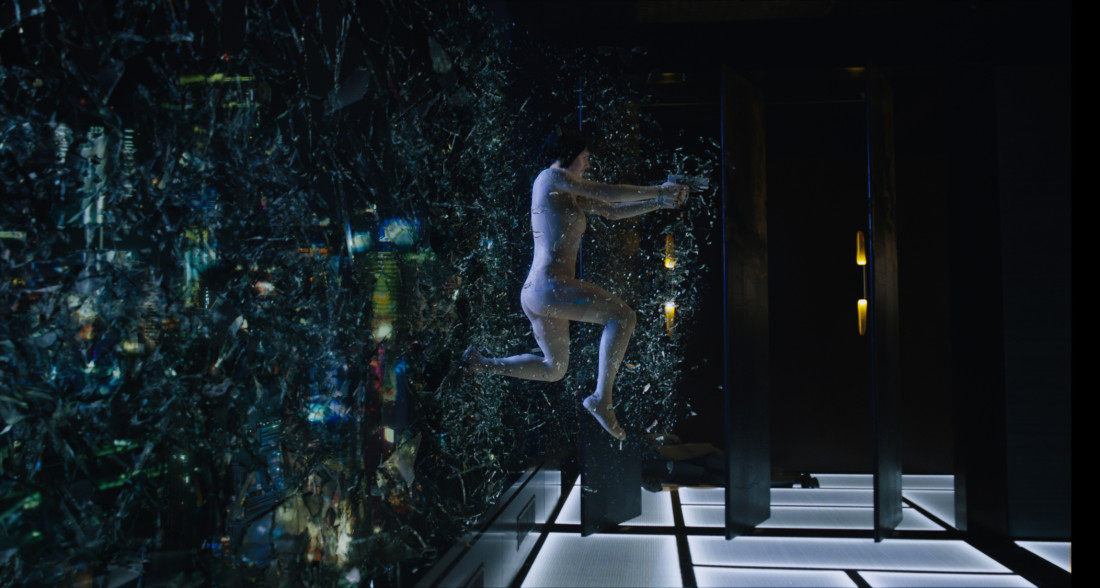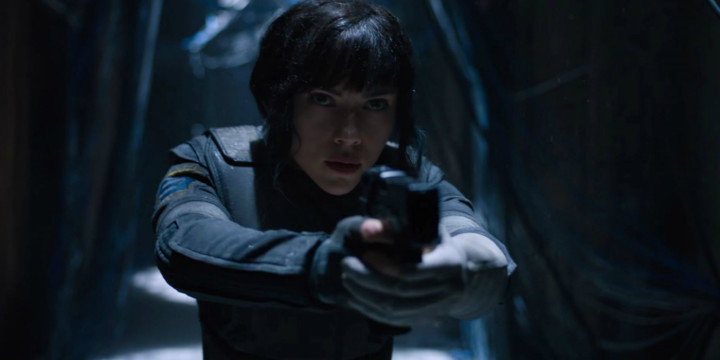Just because something can be done doesn’t mean that it should be done. As yet another exercise in redundancy, Hollywood filmmakers have reappropriated a classic animated property and remade it using a combination of live action and computer-generated effects, resulting in the tepid rehash that is Rupert Sanders’ 2017 take on the classic manga, anime and video game franchise conceived by Masamune Shirow, Ghost in the Shell. What was once a revelatory cyberpunk recontextualization of the classic Theseus’ ship paradox has become a morbid flight of action-film fantasy, stripped of the philosophical profundity that characterised its source material and functioning as little more than another entry in the bloated cinematic pantheon of warmed-over superhero stories.
It’s worth pointing out here that the manga The Ghost in the Shell bore little resemblance to any superhero property extant at the time of its creation. Yes, it originated as a work of sequential art, which to many contemporary Western minds can scarcely consist of anything more than guys in spandex punching things, but Shirow’s story held a much deeper significance than its sci-fi genre trappings would suggest. When translated to the screen in its first anime iteration (though far from its last) by Mamoru Oshii, the underlying meaning was preserved and expanded, leading to a character that would provide the gateway into anime for countless Americans and heavily influencing Western films such as The Matrix.
The focus of the story in all of its forms has always been Major Motoko Kusanagi, an anti-terrorism paramilitary operator whose brain has been placed inside an entirely cybernetic body. Here, the Major is portrayed with admirable athleticism by Scarlett Johansson, but her robotic delivery is too on-the-nose to serve the character’s principal internal conflict. Traditionally, the story’s premise has been used to explore the meaning of humanity when little else of the human remains beyond the mind and soul, and by robbing the character of that subtle semblance of humanity, Sanders and Johansson have missed the point entirely. Sanders replaces the source material’s existential bent with a less inventive fixation on stereotypical sci-fi action tropes that squander the nuanced intricacies of character shading that made the 1995 anime an instant classic. It’s as though the filmmakers completely misinterpreted the appeal of their source material, and while this may not be overly surprising, it is profoundly disappointing.
While Sanders’ film is visually stunning (especially in 3-D), it lacks the textural grime that distinguished Oshii’s film. While the original was aesthetically indebted to Blade Runner, Sanders’ work is more akin to The Fifth Element — and even those willing to forgive that film’s myriad flaws will see that this Ghost suffers by comparison. Sanders and screenwriters Jaimie Moss and William Wheeler have cobbled together bits and pieces of the franchise’s various media properties, taking ideas and characters that may or may not have had any relevance to the story they’re trying to tell and inserting them in the hopes of providing a sense of depth that their film clearly lacks. Much of the film plays as if Sanders is trying desperately to convince the audience he’s a fan of the property while evidently failing to grasp the narrative beats that needed to be established in order to effectively re-create the emotional resonance of his inspiration.
The uproar surrounding Johansson’s casting as an Asian character proves legitimate in practice, but the film makes matters far worse than I could have anticipated — the movie awkwardly shoehorns in a plot point that addresses the issue for one whitewashed character, but none of the others. Sanders et. al. have stripped away the story’s heart — along with much of the sex and violence that so many 12-year-olds (myself included) found so compelling when they discovered Oshii’s work for the first time on home video — and by curtailing the narrative’s more thought-provoking aspects, they’ve delivered a film that is all form and no function. Rated PG-13 for intense sequences of sci-fi violence, suggestive content and some disturbing images. Now Playing at Carolina Cinemark, Regal Biltmore Grande, Epic of Hendersonville.









Before you comment
The comments section is here to provide a platform for civil dialogue on the issues we face together as a local community. Xpress is committed to offering this platform for all voices, but when the tone of the discussion gets nasty or strays off topic, we believe many people choose not to participate. Xpress editors are determined to moderate comments to ensure a constructive interchange is maintained. All comments judged not to be in keeping with the spirit of civil discourse will be removed and repeat violators will be banned. See here for our terms of service. Thank you for being part of this effort to promote respectful discussion.